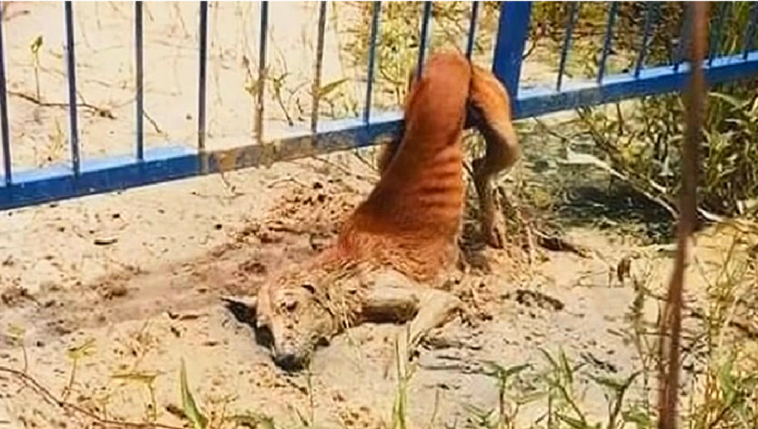In a quiet corner of the neighborhood, a heart-wrenching scene unfolds day after day, unnoticed by many. A forlorn dog, driven by an instinctual need for safety and companionship, runs alongside the fence that confines him. His actions are not mere random patterns; they are a desperate call for help, a plea for someone to notice his silent cries and offer him a chance at a better life. This is the story of a dog in need, a tale that highlights the importance of empathy and intervention.
The poignant narrative begins with the image of a dog running frantically along the fence that encircles his world. To some, it may appear as aimless behavior, but for those who observe closely, it’s a heartrending display of his yearning for connection and freedom. His eyes, filled with a mixture of longing and sadness, seem to implore anyone who would listen to understand his silent plea.


The dog’s desperate behavior raises questions about his past and the circumstances that have led him to this point. Was he once part of a loving family that he lost? Did he experience trauma that has left him wary of humans? These questions serve as a reminder that every animal has a story, often marked by pain and resilience, waiting to be unveiled.
In this poignant tale, the role of humans becomes pivotal. The very species that domesticated dogs and brought them into homes now bears the responsibility of ensuring their well-being. The dog chasing the fence is not seeking to break free for the sake of rebellion; he is seeking a safe haven, a place where he can experience love, care, and the companionship he craves.
As passersby witness the dog’s desperate calls for attention, a spectrum of emotions unfolds. Some may feel pity, while others might feel powerless in the face of his suffering. Yet, within these emotions lies the potential for positive change. Empathy serves as the catalyst for action – the driving force that compels individuals to step forward, to extend a hand of compassion, and to initiate the process of rescue and rehabilitation.
The story of the dog chasing the fence echoes a universal truth – that the bond between humans and animals is one that transcends language and species. It’s a bond built on empathy, understanding, and shared emotions. And just as the dog’s yearning for connection is unmistakable, so too is the capacity of humans to provide the comfort and care he so desperately needs.
In this tale, the process of rescue takes center stage. It’s a journey that begins with identifying the dog’s needs – physical, emotional, and psychological. A team of dedicated individuals, ranging from animal welfare organizations to veterinarians and volunteers, comes together with a common goal: to give the dog a second chance at a fulfilling life.
The initial steps involve building trust, as the dog’s past experiences may have eroded his ability to trust humans. Patience, gentle gestures, and consistency become the tools used to bridge the gap between fear and trust. Slowly but surely, the dog’s demeanor shifts from one of apprehension to one of curiosity and cautious optimism.
Through this process, the transformation is as heartening as it is miraculous. The dog that once ran the length of the fence now walks beside his rescuers, his eyes reflecting a newfound sense of security. His story serves as a beacon of hope, illuminating the potential for healing and change when compassion guides our actions.
In conclusion, the tale of the dog chasing the fence is a poignant reminder of the power of empathy and intervention. It underscores the shared emotions that bind humans and animals, and the responsibility we bear to ensure the well-being of all living beings. The dog’s journey from desperation to hope serves as an inspiration to extend a helping hand to those in need, reaffirming the impact that a single act of compassion can have on a life.